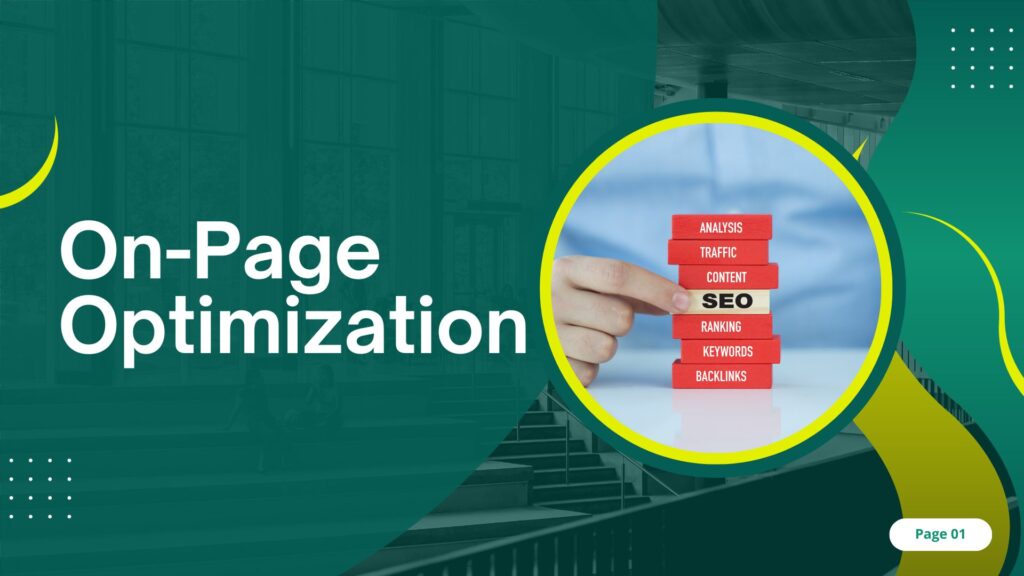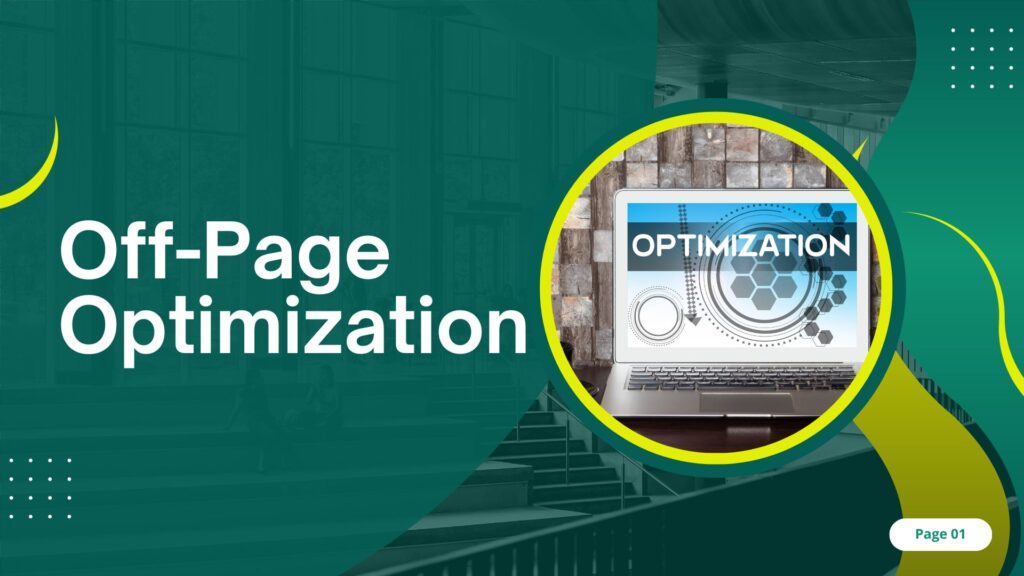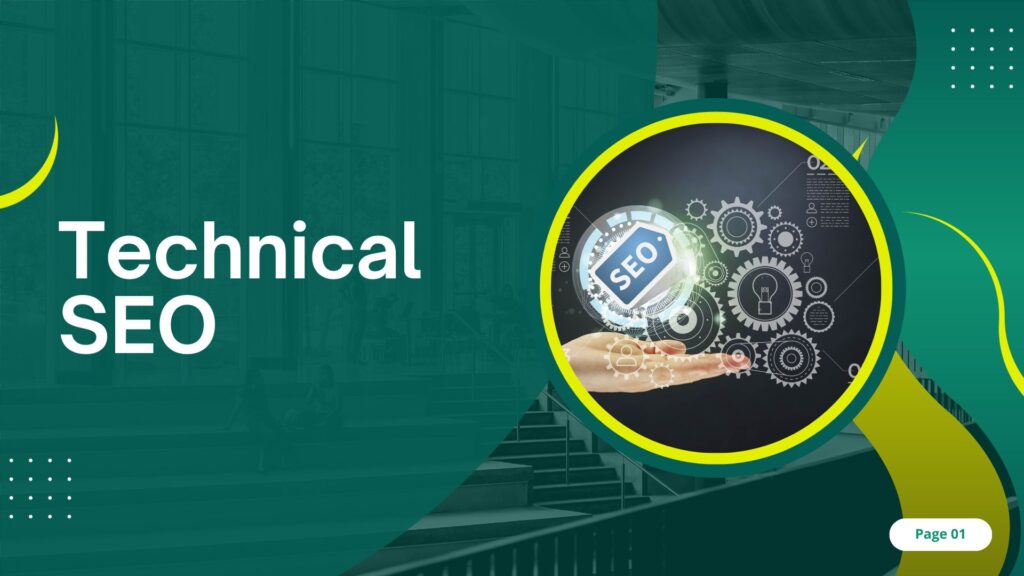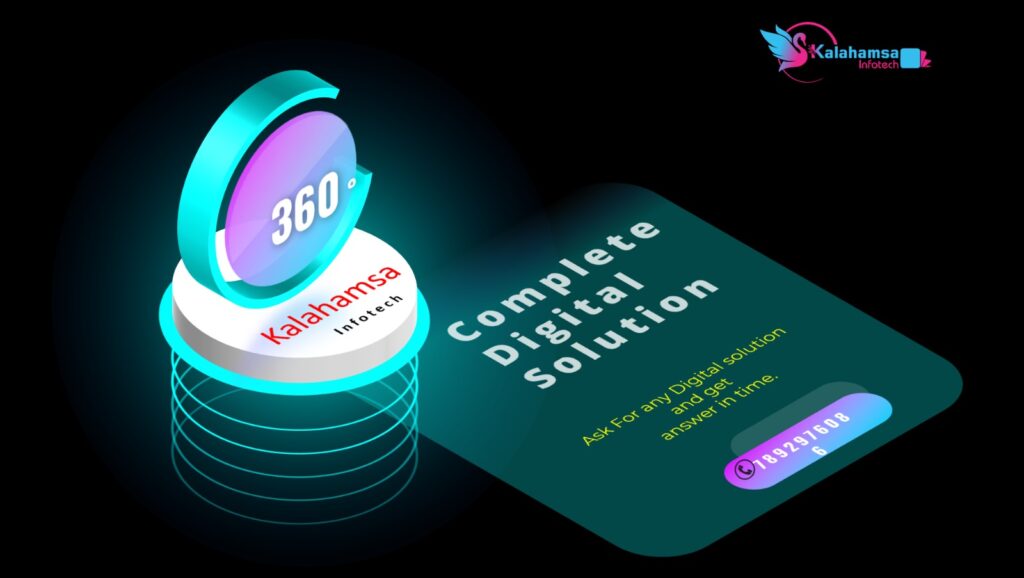SEO or Search Engine Optimization
is a set of strategies and practices aimed at improving a website’s visibility on search engines like Google, Bing, and Yahoo. The goal of SEO is to increase the quantity and quality of organic (non-paid) traffic to a website by optimizing various elements and aspects of the site to align with search engine algorithms.
Here’s a breakdown of how SEO works:
1. Keyword Research:
Brainstorming:
Start by brainstorming topics related to your website, products, or services. Think about the terms your target audience might use when searching for information related to your niche.
Keyword Tools:
Utilize keyword research tools like Google Keyword Planner, SEMrush, Ahrefs, or Ubersuggest to generate keyword ideas and analyze their search volumes, competition, and relevance. These tools provide insights into the popularity and competitiveness of keywords, helping you identify valuable opportunities.
Long-Tail Keywords:
Long-tail keywords are longer and more specific keyword phrases that typically have lower search volume but higher conversion rates. They are valuable for targeting niche audiences and capturing highly relevant traffic. Include a mix of both short-tail (broad) and long-tail keywords in your research.
Competitor Analysis:
Analyze the keywords that your competitors are targeting. Identify the keywords they rank for and assess their search volumes and competitiveness. This can help you discover additional keyword opportunities and understand your competitive landscape.
Relevance and Intent:
Consider the relevance of keywords to your website’s content and the search intent behind them. Choose keywords that align closely with your offerings and the intent of your target audience (e.g., informational, navigational, transactional). This ensures that you attract visitors who are genuinely interested in what you have to offer.
Local Keywords (if applicable):
If you have a local business, incorporate location-based keywords into your research. These include keywords with geographic modifiers (e.g., city names, neighborhoods) to target users searching for products or services in specific locations.
Organize and Prioritize:
Organize your list of keywords into categories or themes based on relevance and search volume. Prioritize keywords with high search volume, low competition, and strong alignment with your business objectives.
Refine and Update:
Keyword research is an ongoing process. Regularly review and update your keyword list based on changes in search trends, user behavior, and your business goals.
2.On-Page Optimization:
Title Tags: Descriptive titles that include relevant keywords.
Meta Descriptions: Concise summaries that entice users to click on the search result.
Headings (H1, H2, etc.): Organize content with headers and include keywords where appropriate.
URL Structure: Create clean and relevant URLs.
On-page optimization refers to the process of optimizing various elements within your website to improve its visibility and relevance to search engines for specific keywords or topics. Here’s how it works:
Title Tags:
The title tag is one of the most critical on-page SEO elements. It should accurately describe the content of the page and include relevant keywords. Keep it concise (under 60 characters) and compelling to encourage clicks from search engine users.
Meta Descriptions:
Meta descriptions are brief summaries of a webpage’s content displayed in search engine results. While not a direct ranking factor, a well-written meta description can improve click-through rates. Include relevant keywords and a clear call-to-action within 160 characters.
Headers (H1, H2, etc.):
Use headers to structure your content logically and make it easier for both users and search engines to understand. The H1 tag should contain the main headline of the page and include primary keywords, while H2-H6 tags can be used to organize subheadings and sections.
URL Structure:
Create SEO-friendly URLs that are descriptive, concise, and include relevant keywords. Avoid using generic URL structures with numbers or symbols. Instead, use hyphens to separate words and make URLs readable to both users and search engines.
Keyword Optimization:
Incorporate target keywords naturally throughout the content, including in headings, paragraphs, image alt texts, and anchor text for internal and external links. However, avoid keyword stuffing, as it can harm your rankings and user experience.
Content Quality and Relevance:
Publish high-quality, relevant, and valuable content that satisfies user intent. Ensure that your content provides comprehensive information on the topic and addresses the needs and questions of your target audience.
Internal Linking:
Link to other relevant pages within your website using descriptive anchor text. Internal linking helps search engines understand the structure of your site and distributes link equity throughout your pages, potentially improving their rankings.
Image Optimization:
Optimize images by using descriptive file names and alt attributes that include relevant keywords. This not only improves accessibility for visually impaired users but also provides additional context to search engines about the content of your images.
Page Speed and Mobile Friendliness:
Ensure that your website loads quickly and provides a seamless experience across devices, especially on mobile devices. Page speed and mobile-friendliness are important ranking factors, and optimizing for them can improve user experience and search engine rankings.
Schema Markup:
Implement schema markup to provide search engines with additional context about your content, such as reviews, ratings, event details, and FAQs. Schema markup can enhance your search engine listings and improve visibility in rich snippets and other SERP features.
3.Content Creation:
Identify Your Audience:
Before creating content, it’s crucial to understand your target audience’s demographics, interests, preferences, and pain points. Conduct market research, analyze customer data, and create buyer personas to guide your content strategy.
Set Objectives and Goals:
Determine the goals you want to achieve with your content, whether it’s increasing brand awareness, driving website traffic, generating leads, boosting sales, or establishing thought leadership in your industry. Your content strategy should align with these objectives.
Choose Content Formats:
Consider the types of content that resonate best with your audience and align with your goals. This could include written content (articles, blog posts, ebooks), visual content (infographics, videos, images), audio content (podcasts, audio guides), interactive content (quizzes, polls, surveys), and more.
Keyword Research:
Conduct keyword research to identify topics and keywords that are relevant to your audience and have sufficient search volume. Incorporate these keywords naturally into your content to improve its visibility in search engine results and attract organic traffic.
Create Compelling Content:
Develop high-quality, engaging, and valuable content that addresses the needs, questions, and interests of your audience. Ensure that your content is well-researched, accurate, and provides unique insights or perspectives to stand out from competitors.
Optimize for SEO:
Optimize your content for search engines by incorporating relevant keywords, writing descriptive titles and meta descriptions, using headers and subheadings, and formatting content for readability. This helps improve your content’s visibility and ranking in search engine results pages (SERPs).
Promote Your Content:
Once you’ve created content, promote it across various channels to reach your target audience. This could include sharing on social media, sending email newsletters, participating in online communities and forums, collaborating with influencers, and leveraging paid advertising.
Measure and Analyze Performance:
Track the performance of your content using analytics tools to evaluate its effectiveness in achieving your goals. Monitor key metrics such as website traffic, engagement, conversions, and ROI. Use these insights to refine your content strategy and optimize future content creation efforts.
Iterate and Improve:
Continuously assess the performance of your content and iterate based on feedback and data analysis. Experiment with different content formats, topics, and distribution channels to identify what resonates best with your audience and drives the desired results.
4.Off-Page Optimization:
Link Building:
Link building is one of the most important aspects of off-page optimization. It involves acquiring backlinks (links from other websites to yours) from authoritative and relevant sources. Search engines view backlinks as votes of confidence in your site’s content and authority. Focus on earning high-quality backlinks from reputable websites through strategies such as guest blogging, content partnerships, influencer outreach, and directory submissions.
Social Media Engagement:
Active participation on social media platforms can contribute to off-page optimization. Sharing your content on social networks can increase its visibility, attract more traffic to your website, and encourage social sharing and engagement. Additionally, social signals (such as likes, shares, and comments) may indirectly impact search engine rankings.
Online Reputation Management:
Managing your online reputation is crucial for off-page optimization. Monitor and respond to reviews, comments, and mentions of your brand across various online platforms. Positive reviews and mentions can enhance your brand’s credibility and authority, while addressing negative feedback promptly can mitigate its impact on your reputation.
Brand Mentions and Citations:
Building brand mentions and citations (mentions of your brand name, website, or products/services without a backlink) across the web can contribute to off-page optimization. Even without a direct link, brand mentions signal to search engines that your brand is relevant and authoritative within your industry or niche.
Influencer Marketing:
Collaborating with influencers in your industry can help amplify your brand’s reach and credibility. Influencers can promote your content, products, or services to their audience, leading to increased visibility and potential backlinks. Choose influencers whose audience aligns with your target demographic for maximum impact.
Local SEO Strategies:
For businesses targeting local customers, off-page optimization efforts should include local SEO strategies. This involves optimizing your online presence for local search, including creating and optimizing Google My Business listings, obtaining local business citations, and earning positive reviews from local customers.
Content Promotion and Distribution:
Promoting your content through various channels and distribution networks can enhance its reach and visibility, leading to more backlinks and social shares. This could involve sharing content on relevant forums, communities, industry publications, and content aggregation platforms.
Community Engagement:
Engaging with online communities, forums, and industry groups can help establish your brand’s authority and credibility. Contribute valuable insights, answer questions, and participate in discussions related to your niche to build relationships and attract attention to your brand.
5.Technical SEO:
Ensure that your website is technically sound and can be easily crawled and indexed by search engine bots.
This includes:
Site Speed: Faster-loading sites are preferred by search engines.
Mobile Optimization: Ensure your site is mobile-friendly.
Secure Connection (HTTPS): Secure websites are given preference.
Technical SEO refers to the optimization of the technical aspects of a website to improve its search engine visibility and usability. Unlike on-page and off-page optimization, which focus on content and external factors, respectively, technical SEO focuses on backend elements that affect crawling, indexing, and overall website performance. Here’s how technical SEO works:
Website Speed Optimization:
Website speed is a crucial ranking factor and impacts user experience. Technical SEO involves optimizing page load times by minimizing server response times, leveraging browser caching, compressing images, and reducing unnecessary code and scripts.
Mobile-Friendliness:
With the increasing use of mobile devices for browsing, mobile-friendliness has become a critical aspect of technical SEO. Ensure that your website is responsive and provides a seamless user experience across various devices and screen sizes. Google’s mobile-first indexing prioritizes mobile-friendly websites in search results.
Crawlability and Indexing:
Technical SEO aims to ensure that search engine crawlers can effectively crawl and index your website’s pages. This involves optimizing robots.txt file to control crawler access, creating and submitting XML sitemaps to search engines, and fixing crawl errors (such as broken links and 404 pages) using tools like Google Search Console.
Website Architecture and Structure:
A well-organized website structure improves usability for both users and search engines. Technical SEO involves creating a logical site hierarchy with clear navigation, using descriptive URLs, and implementing breadcrumbs to help users and search engines understand the relationship between different pages.
Canonicalization:
Canonicalization is the process of resolving duplicate content issues by specifying the preferred version of a URL (canonical URL). Technical SEO ensures that canonical tags are implemented correctly to consolidate link equity and prevent duplicate content penalties.
Schema Markup:
Schema markup is structured data that provides additional context to search engines about the content of a webpage. Technical SEO involves implementing schema markup to enhance search engine listings and increase the likelihood of appearing in rich snippets, knowledge panels, and other SERP features.
SSL/HTTPS:
Secure Socket Layer (SSL) encryption and Hypertext Transfer Protocol Secure (HTTPS) are essential for website security and user trust. Technical SEO involves migrating your website to HTTPS to encrypt data transmission and signal to search engines that your site is secure, which can positively impact rankings.
Site Speed Optimization:
Website speed is crucial for user experience and search engine rankings. Technical SEO involves optimizing server performance, minifying CSS, JavaScript, and HTML files, leveraging browser caching, and utilizing content delivery networks (CDNs) to improve site speed.
Structured Data Markup:
Implementing structured data markup helps search engines understand the context of your content better, which can lead to enhanced search results with rich snippets, such as star ratings, reviews, event details, and FAQs. Technical SEO involves adding structured data markup using schema.org vocabulary.
Monitoring and Maintenance:
Technical SEO is an ongoing process that requires regular monitoring and maintenance. Continuously monitor website performance, crawl errors, indexation issues, and other technical aspects using tools like Google Search Console, Bing Webmaster Tools, and third-party SEO platforms.
6.User Experience:
Focus on providing a positive user experience. Factors such as easy navigation, mobile responsiveness, and low bounce rates contribute to a site’s SEO performance. User experience (UX) refers to the overall experience that a user has when interacting with a website, application, or product. It encompasses various aspects of design, usability, accessibility, and functionality, all aimed at creating a positive and intuitive experience for the user. Here’s how user experience works:
Usability:
Usability is a core aspect of UX design, focusing on how easily and efficiently users can accomplish their goals when using a website or product. This involves factors such as intuitive navigation, clear layout and organization, easily understandable content, and minimal friction in completing tasks.
Responsive Design:
With the increasing use of mobile devices, responsive design has become essential for providing a seamless user experience across various screen sizes and devices. Responsive design ensures that websites adapt and display optimally on smartphones, tablets, laptops, and desktop computers.
Page Load Speed:
Page load speed significantly impacts user experience and can affect bounce rates and conversion rates. Optimizing page load times through techniques such as image optimization, browser caching, and minimizing server response times improves user satisfaction and retention.
Accessibility:
Accessibility ensures that websites and products are usable by people with disabilities, including those with visual, auditory, motor, or cognitive impairments. Designing with accessibility in mind involves providing alternative text for images, keyboard navigation, proper color contrast, and other features to accommodate diverse user needs.
Content Readability and Clarity:
Well-written and easily digestible content enhances user experience by providing valuable information in a clear and understandable manner. Use concise language, descriptive headings, bullet points, and visual aids to improve content readability and accessibility.
Intuitive Navigation:
Intuitive navigation helps users quickly find the information they’re looking for and navigate through the website seamlessly. Use clear menu structures, logical page hierarchies, breadcrumbs, and internal links to guide users and make it easy for them to move between pages.
Consistency:
Consistency in design elements, layout, and interactions across different pages and sections of the website promotes familiarity and reduces cognitive load for users. Maintain consistent branding, typography, color schemes, and user interface elements throughout the website.
Feedback and Error Handling:
Providing feedback to users when they perform actions or encounter errors helps them understand the system’s response and navigate effectively. Use visual cues, informative error messages, and confirmation dialogs to communicate with users and guide them through the user interface.
User Testing and Feedback:
Conducting user testing and gathering feedback from real users is essential for understanding their needs, preferences, and pain points. Use techniques such as usability testing, surveys, interviews, and heatmaps to gather insights and identify areas for improvement in the user experience.
Continuous Iteration and Improvement:
User experience is an ongoing process that requires continuous iteration and improvement based on user feedback, analytics data, and evolving trends. Regularly analyze user behavior, test new features and designs, and iterate based on insights to optimize the user experience over time.
Read more: 7 Dynamic Web Design Strategies in Bangalore by KIPL
7.Analytics and Monitoring:
Use tools like Google Analytics to monitor website performance, track user behavior, and gather insights. Adjust your SEO strategy based on the data collected. Analytics and monitoring play a crucial role in the field of SEO (Search Engine Optimization) by providing insights into website performance, user behavior, and search engine rankings. Here’s how analytics and monitoring are applied in SEO:
Keyword Analysis:
Analytics tools help identify relevant keywords and phrases that users are searching for. Monitoring keyword performance over time allows SEO professionals to optimize content and target high-value keywords.
Website Traffic Analysis:
Analytics tools like Google Analytics provide data on website traffic sources, user demographics, and behavior. Monitoring website traffic helps assess the effectiveness of SEO strategies and identify areas for improvement.
Rank Tracking:
SEO monitoring tools track keyword rankings in search engine results pages (SERPs) over time. Monitoring keyword rankings helps SEO professionals understand their website’s visibility and competitiveness in search results.
Backlink Analysis:
Monitoring backlinks from other websites is essential for SEO. Analyzing backlink profiles helps identify high-quality backlinks, assess link-building strategies, and detect any harmful backlinks that could negatively impact search engine rankings.
Content Performance:
Analytics tools measure the performance of website content, including page views, time on page, and bounce rate. Monitoring content performance helps identify top-performing content, optimize underperforming content, and guide content strategy.
Technical SEO Audits:
Monitoring tools assess technical aspects of website performance, such as site speed, mobile-friendliness, and crawlability. Technical SEO audits identify issues that could affect search engine rankings and user experience.
Competitor Analysis:
Monitoring competitor websites and SEO strategies provides valuable insights into industry trends and competitive landscapes. Analyzing competitor keywords, backlinks, and content strategies helps inform SEO tactics and identify opportunities for improvement.
Algorithm Updates:
Monitoring search engine algorithm updates is crucial for staying informed about changes that could impact website rankings. Analyzing algorithm updates helps adapt SEO strategies to maintain or improve search engine visibility.
Local SEO Monitoring:
For businesses targeting local markets, monitoring local SEO performance is essential. Tracking local search rankings, reviews, and citations helps optimize local search visibility and attract relevant traffic.
8. Algorithm Changes:
Stay informed about search engine algorithm updates. Search engines continually refine their algorithms, and staying current helps you adapt your strategy accordingly. Algorithm changes in the context of SEO refer to updates made by search engines like Google to their ranking algorithms, which determine the order of search results displayed to users in response to a query. These changes can have significant impacts on website rankings and traffic, making them a crucial consideration for SEO professionals and website owners. Here’s how algorithm changes typically work and their implications:
Purpose of Algorithm Changes:
Search engines continuously refine their algorithms to deliver the most relevant and high-quality search results to users.
Algorithm updates aim to improve the search experience by rewarding websites that offer valuable content, adhere to best practices, and provide a positive user experience.
Types of Algorithm Changes:
Core Updates: Broad changes to the main search algorithm that can impact a wide range of websites and industries. These updates often occur several times a year and can result in noticeable fluctuations in rankings.
Specific Updates: Targeted changes that focus on particular aspects of the algorithm, such as mobile-friendliness, page speed, or content quality.
Security Updates: Changes aimed at improving the security of search results, such as penalizing websites with security vulnerabilities or malware.
Impact on Website Rankings:
Algorithm changes can lead to fluctuations in website rankings, with some sites experiencing increases in visibility while others may see drops.
Websites that align with the intent of the algorithm updates and provide high-quality, relevant content are more likely to benefit from algorithm changes.
Conversely, websites that engage in manipulative or spammy tactics may be penalized and see decreases in rankings.
Monitoring and Adaptation:
SEO professionals closely monitor algorithm changes and their impact on website performance using tools like Google Analytics, Google Search Console, and third-party SEO software.
It’s essential to adapt SEO strategies in response to algorithm updates, such as optimizing content, improving site speed, enhancing mobile-friendliness, and building high-quality backlinks.
Continuous monitoring, analysis, and adaptation are key to maintaining and improving website rankings in the face of algorithm changes.
Communication from Search Engines:
Search engines like Google often provide guidance and announcements regarding algorithm updates through official channels, blogs, and webmaster resources.
SEO professionals rely on these communications to understand the purpose and implications of algorithm changes and adjust their strategies accordingly.
9. Local SEO (if applicable):
For businesses targeting a local audience, optimize for local searches. This includes setting up a Google My Business profile and obtaining local citations. Local SEO refers to the process of optimizing a business’s online presence to attract more local customers and improve visibility in local search results. It’s especially important for businesses that serve specific geographic areas, such as brick-and-mortar stores, restaurants, service-based businesses, and professionals like doctors and lawyers. Here are the key components and strategies of local SEO:
Google My Business (GMB) Optimization:
Claiming and optimizing your Google My Business listing is essential for local SEO. This includes providing accurate business information (name, address, phone number), selecting relevant categories, adding photos, and regularly updating business hours and other details.
Local Keyword Research:
Conduct keyword research to identify the terms and phrases that local customers are using to find businesses like yours. Target local keywords in your website content, meta tags, and GMB profile to improve visibility in local search results.
On-Page SEO:
Optimize your website’s on-page elements for local search by including location-specific keywords in titles, headings, meta descriptions, and content. Create location pages if you serve multiple areas or have multiple physical locations.
NAP Citations:
Ensure consistency of your business name, address, and phone number (NAP) across all online directories, listings, and citations. This helps search engines and customers verify the legitimacy and credibility of your business.
Local Link Building:
Acquire high-quality backlinks from local websites, directories, chambers of commerce, and local publications. Local links signal to search engines that your business is relevant to the local community and can improve your local search rankings.
Local Reviews and Ratings:
Encourage satisfied customers to leave positive reviews and ratings on your Google My Business profile and other relevant review platforms. Positive reviews not only enhance your online reputation but also influence local search rankings.
Local Schema Markup:
Implement schema markup on your website to provide search engines with structured data about your business, including name, address, phone number, business hours, and customer reviews. This can improve the visibility of your business in local search results and enhance the appearance of your listings.
Mobile Optimization:
Ensure that your website is mobile-friendly and optimized for local search on mobile devices. Many local searches are conducted on smartphones, so a mobile-responsive website is crucial for attracting and engaging local customers.
Localized Content:
Create content that is relevant to your local audience, such as blog posts, articles, and resources that address local interests, events, and issues. This can help you connect with your community and attract local traffic to your website.
In essence, SEO is an ongoing process that requires continuous effort and adaptation. It’s about understanding what users are searching for, creating valuable content, and ensuring that search engines can find, index, and rank your content appropriately. The ultimate goal is to provide a positive user experience and meet the needs of both users and search engines.









